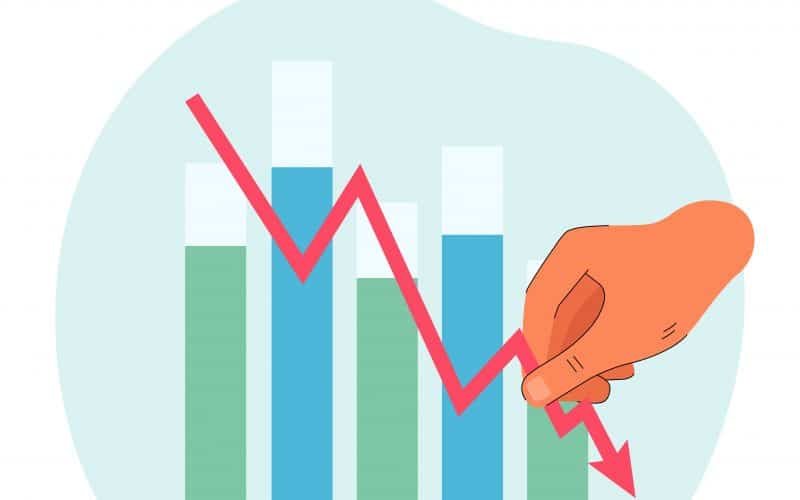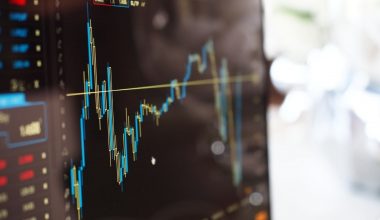The initial days of the COVID-19 epidemic were “volatile” for the financial market. To a lesser extent, it was “volatile” once more before the 2020 U.S. presidential election. You may have heard that the stock market’s “anxiety gauge” is high at certain periods, but what does that even mean? Learn about stock market volatility in finance and how to measure the stock market volatility index.
What is Volatility?
Volatility refers to the speed at which the price of a stock rises or falls during a specific timeframe. When stock prices change a lot, it usually means there is more risk. This volatility can be helpful for investors as it allows them to gauge the potential fluctuations that may occur in the future.
You may want to see more about :VOLATILITY: Meaning, Stock Price & Market Risk
Is Volatility Good or Bad for the Stock Market?
The presence of volatility does not necessarily imply negative outcomes, as it might occasionally present opportunities for investors to capitalize on. Investors who hold a positive long-term outlook on the market might take advantage of downward market volatility by purchasing additional stocks in companies of their preference at reduced prices.
What Is Volatility in Finance?
In finance, volatility typically refers to the level of uncertainty or risk associated with the magnitude of fluctuations in the value of a security. When a security’s value is more volatile, it means that it could go through a wider range of values. This implies that the price of the security has the potential to undergo significant changes, either upwards or downwards, within a short span of time. Lower volatility refers to a situation where the value of a security does not experience significant fluctuations and remains relatively stable.
One method for assessing the variability of an asset is to calculate the daily returns, which represent the percentage change in value on a daily basis. Historical volatility is a way to figure out how much an asset’s profits have changed over time by looking at its past prices. The given number is given as a percentage and does not have a specific value.
Variance represents the extent to which returns deviate from the average value of an asset, while volatility measures this variance within a specific time frame. We have the ability to provide reports on various levels of volatility, including daily, weekly, monthly, or yearly volatility. Therefore, it is helpful to conceptualize volatility as the yearly standard deviation.
Read also: PRICE VOLATILITY: Tips to Know About Stock, Oil, Crypto & Options Volatility
What Is Stock Market Volatility?
Stock market volatility refers to the extent of fluctuations in the overall value of the stock market, encompassing both upward and downward movements. In addition to the overall market, individual stocks can also exhibit volatility. To calculate volatility, you can examine the extent to which the price of an asset deviates from its average price. The measure of statistical significance commonly used to represent volatility is the standard deviation.
Stock market volatility tends to increase when external events introduce uncertainty. During the onset of the COVID-19 pandemic, the major stock indexes experienced significant volatility, with daily fluctuations exceeding 5%, in contrast to their usual movement of less than 1% per day. The lack of knowledge about future events resulted in a state of uncertainty, which in turn caused a frenzy of buying and selling. Some equities have higher volatility than others. Shares of a blue-chip firm may not see large price movements as frequently as shares of a high-flying tech stock. The blue-chip stock has minimal volatility, but the tech stock has tremendous volatility. Medium volatility falls halfway in the middle. Individual stocks can also become more volatile around significant events, such as quarterly earnings reporting.
Furthermore, fear is frequently related to volatility, which tends to spike during bad markets, stock market collapses, and other major downturns. Volatility, on the other hand, does not gauge direction. It merely measures the magnitude of price swings. You can think of volatility as a way to measure how unsure things are in the short term. Historical volatility refers to how volatile an asset was in the past, whereas implied volatility refers to how volatile investors predict an asset to be in the future. To figure out the potential volatility, you can use the prices of put and call options.
How to Measure Stock Market Volatility
There are three common methods to measure stock market volatility, which are as follows:
#1. Beta
Beta is a metric that quantifies the degree of volatility that securities exhibit in comparison to the overall market. A beta of 1 indicates that the security’s volatility aligns with the overall market’s degree and direction. If the S&P 500 experiences a significant decline, it is probable that the stock in question will also decrease by a comparable extent.
Securities that are relatively stable, such as utilities, typically have beta values of less than 1. This indicates that they have lower volatility compared to the broader market. Stocks in rapidly evolving industries, particularly in the technology sector, typically exhibit beta values greater than 1. These securities exhibit higher levels of volatility. A beta value of 0 indicates that the underlying security does not exhibit any market-related volatility. Cash is an excellent example where there is no assumption of inflation. There are, however, assets with low or even negative beta numbers that are very volatile and have nothing to do with how the stock market moves.
#2. The VIX
The Volatility Index, commonly referred to as the VIX is a measure that gauges the anticipated level of volatility within the upcoming 30-day period. The Chicago Board Options Exchange created the VIX to evaluate the anticipated volatility of the U.S. stock market over a 30-day period. It is calculated using real-time quotes from the S&P 500 call and put options. It serves as a reliable predictor of future bets made by traders and investors on the direction of the markets or particular securities. A high reading on the VIX indicates that the market is perceived to be more risky. Traders have the option to trade the VIX using various options and exchange-traded products.
Alternatively, they can utilize VIX values to measure and determine the pricing of specific derivative stock market volatility products. The specific number is not of great significance, and the calculation of the VIX is quite intricate. However, it is important for investors to be aware that the VIX is commonly known as the market’s “fear gauge.” Investors may become concerned about substantial stock price fluctuations in the upcoming days and weeks if the VIX experiences a significant increase.
#3. Standard Deviation
This is a single risk measure that investors can use to measure, compare, and rank equities in order to isolate low-volatility market stocks.
Why Is Stock Volatility Important?
The amount of change in a stock or the stock market as a whole can be seen as a sign of fear or doubt. Prices tend to fluctuate more dramatically, both in upward and downward directions, when investors struggle to interpret financial or corporate data effectively. Therefore, an increase in overall volatility can serve as an indicator of an impending market downturn. Volatility plays a crucial role in determining the prices of options contracts.
You may want to see: Implied Volatility (IV): Formula and Calculator (detailed steps for calculating IV)
Factors That Contribute to Stock Price Volatility
The factors that contribute to stock price volatility include the following:
#1. Commerce and Sector
Certain events have the potential to create volatility within a specific industry or sector. In the oil sector, a significant weather event occurring in a crucial oil-producing region can result in a rise in oil prices. The stock price of companies involved in oil distribution may increase due to the potential benefits they would receive. Conversely, companies with high oil costs in their operations may experience a decline in their stock prices.
In the same vein, if there is an increase in government regulation within a particular industry, it could potentially lead to a decline in stock prices. This is because the industry would have to bear the burden of higher compliance and employee costs, which could have a negative impact on future earnings growth.
#2. Economic and Political Variables
The regulation of industries by governments holds significant importance as it can exert a substantial influence on the economy through determinations regarding trade agreements, legislation, and policy. A wide range of factors, including speeches and elections, have the potential to elicit responses from investors, thereby exerting an influence on stock prices.
The role of economic data is significant, as investors generally respond favorably during periods of economic prosperity. Monthly job reports, inflation, purchasing behaviour, and quarterly GDP predictions affect market performance as economic factors. On the other hand, in the event that these fail to meet market expectations, there is a possibility of increased volatility in the markets.
#3. Business Efficacy
Volatility might manifest in a manner that is not necessarily pervasive over the entire market but rather specific to a particular company. Positive news, such as a robust financial performance or the introduction of a highly acclaimed product that is garnering positive reception from consumers, has the potential to instill a sense of optimism and confidence among investors regarding the business. The heightened interest from numerous investors can contribute to an augmented demand, hence potentially leading to an upward trajectory in the stock price.
On the contrary, the stock price might be negatively impacted by occurrences such as a product recall, a data breach, or unfavourable executive conduct, leading investors to divest their holdings. Depending on how big a company is, its performance can either benefit or hurt the larger market.
Is High or Low Volatility Better for Stocks?
Day traders often prefer high-volatility stocks because they offer more chances to make significant gains or losses within a relatively short timeframe. Long-term buy-and-hold investors typically favor investments with low volatility, as they seek incremental and steady gains over an extended period. Typically, when there is an increase in volatility in the stock market, it often indicates a heightened sense of fear regarding a potential downturn.
Are We in a Bull or Bear Market 2023?
A majority of over 60% of respondents hold the belief that the stock market’s recent gain is merely a temporary rebound in a bear market, indicating their anticipation of further challenges in the future. According to a recent survey, 39% of investors hold the belief that we are currently experiencing a new bull market. In just this month, the S&P 500 has experienced a decline of over 5%, resulting in a reduction of its 2023 gains to 11%.
What Does a Volatility of 10% Mean?
Volatility is commonly measured as a percentage. So, if a stock is ranked at 10%, it indicates that it has the capacity to either increase or decrease by 10% of its overall value. Stock volatility increases as the number rises.
Why Do Traders Like Volatility?
In a market that is experiencing high volatility with rapidly changing prices, an upside breakout has the potential to lead to an immediate and significant increase in prices. The potential they offer is what drives trading breakouts in a volatile market environment.
What Is Causing Market Volatility?
Numerous factors, such as monthly job news reports, inflation statistics, purchasing behavior data, and quarterly GDP calculations, can affect market performance. On the other hand, if these fail to meet market expectations, it is likely that markets will experience increased volatility.
References
- fidelity.com.sg
- investopedia.com
- nasdaq.com
We Also Recommend the Following
- PRICE VOLATILITY: Tips to Know About Stock, Oil, Crypto & Options Volatility
- WHAT IS BETA TESTING: Definition, Benefits & All to Know
- VVIX: How can VIX investors benefit from VVIX?
- Implied Volatility Options; How to Identify High & Low Volatility Options
- VOLATILITY: Meaning, Stock Price & Market Risk
- THE TOP BEST BAD CREDIT LOANS OF 2023






